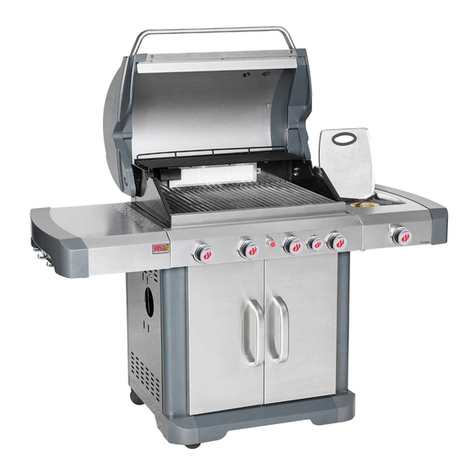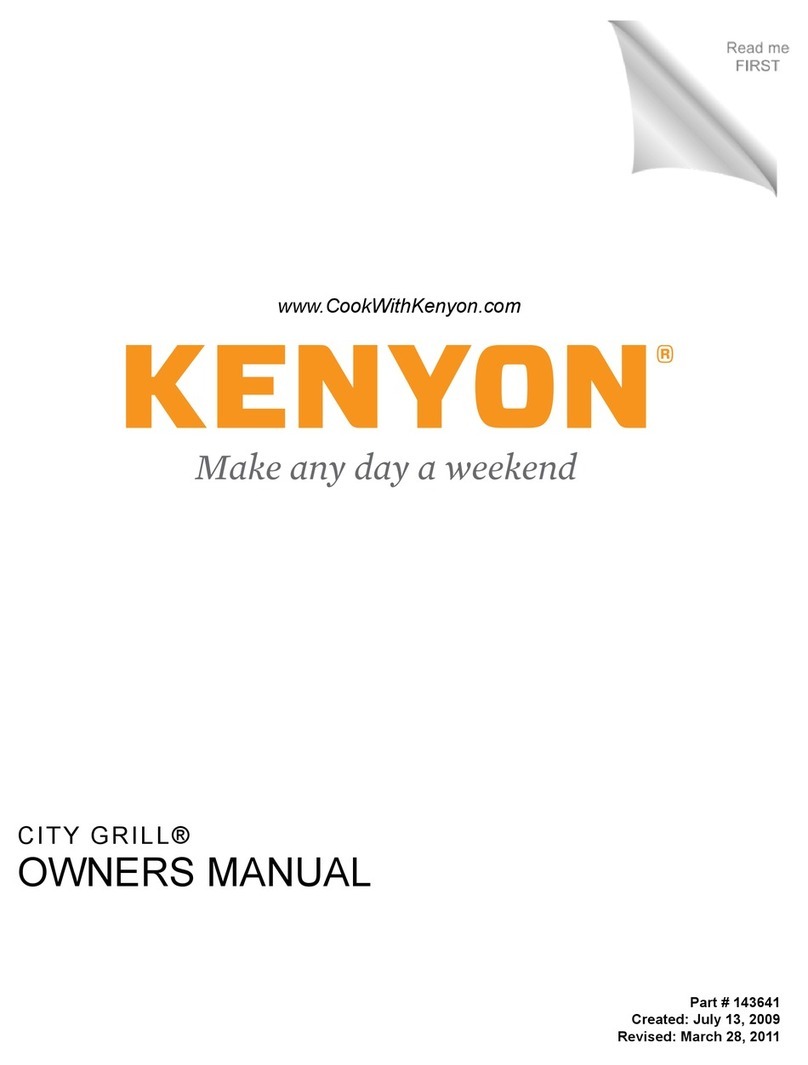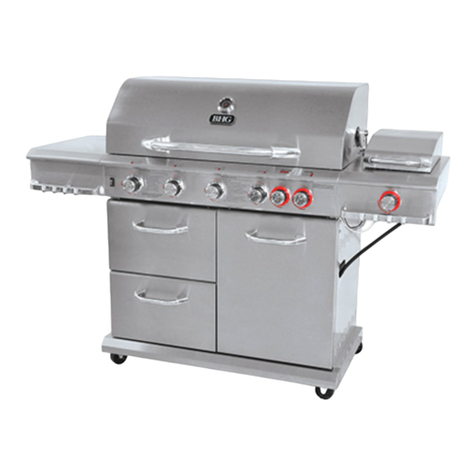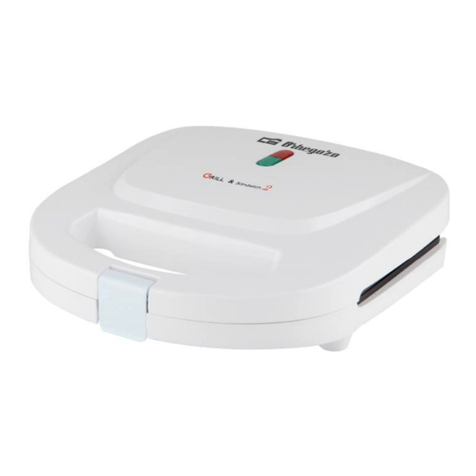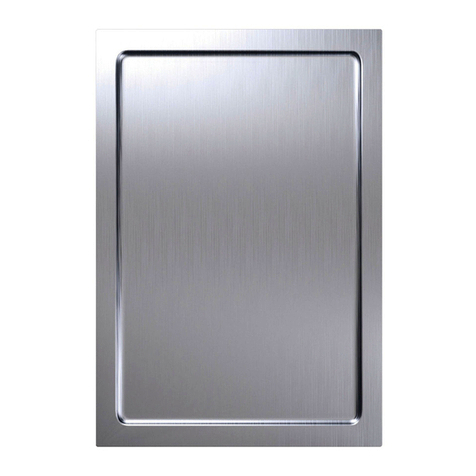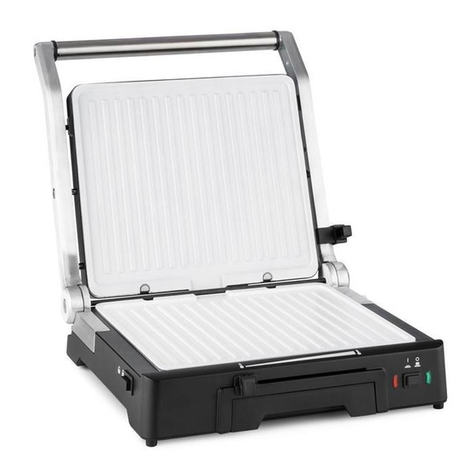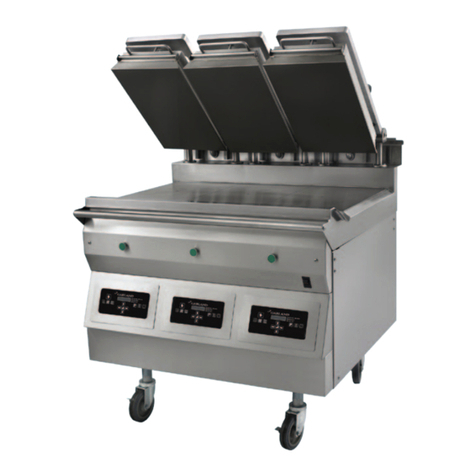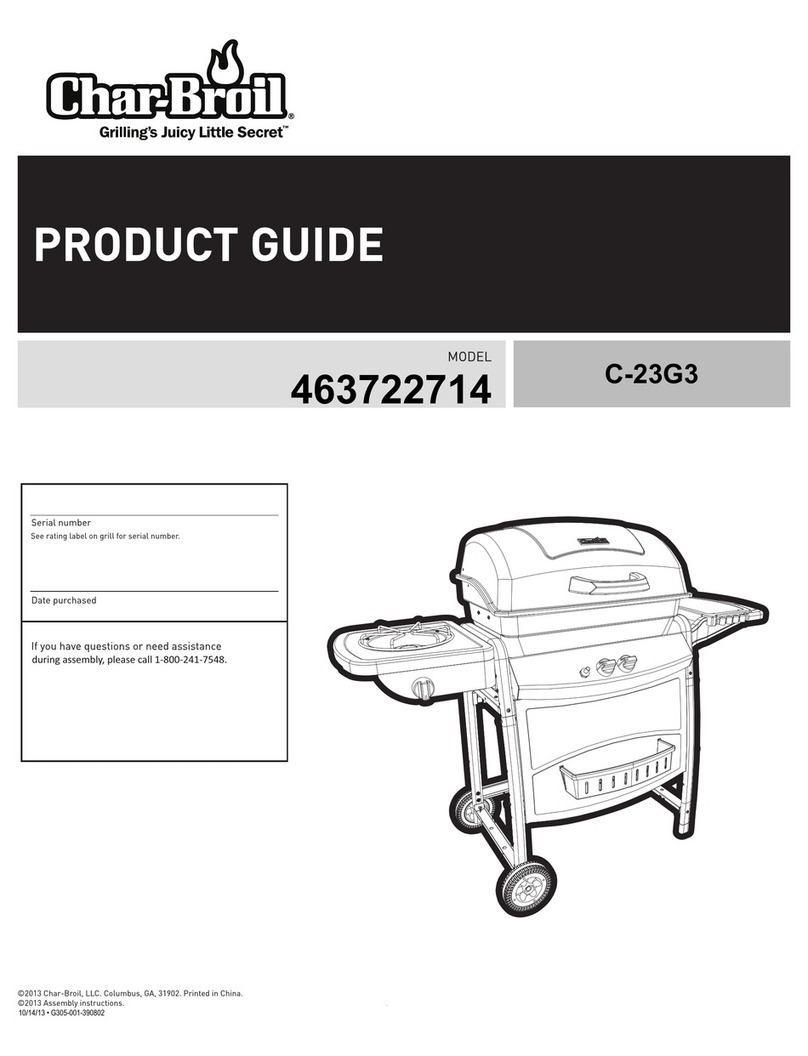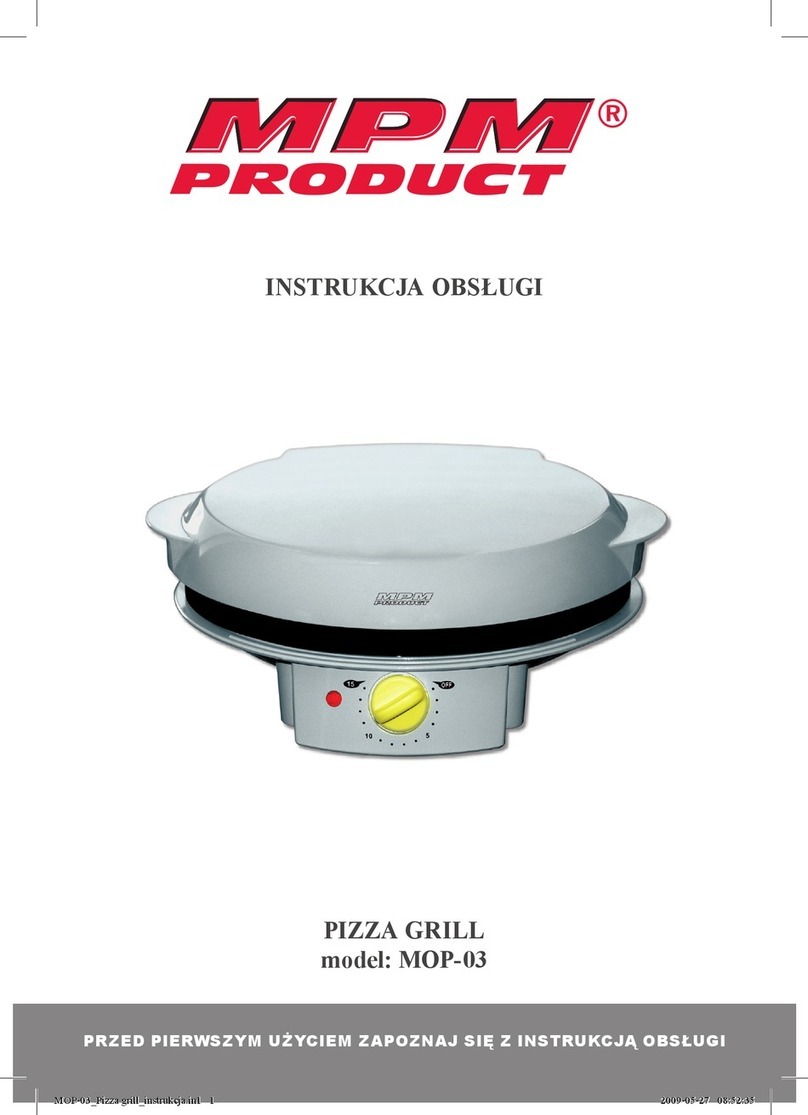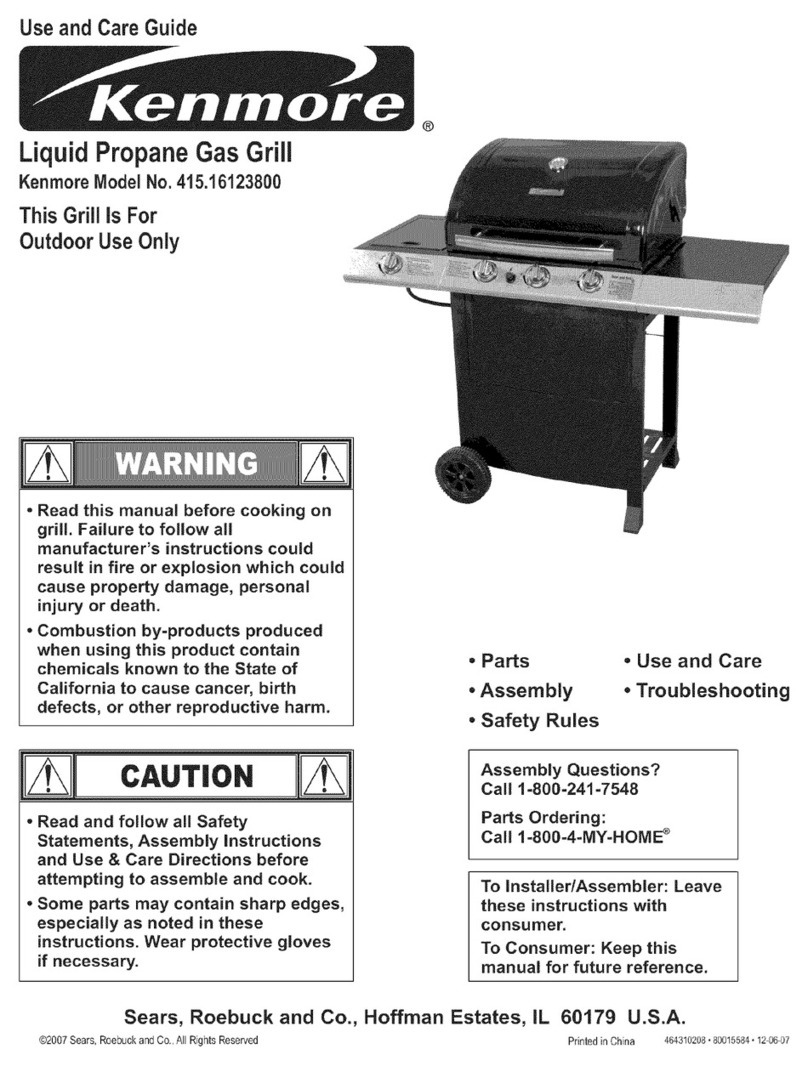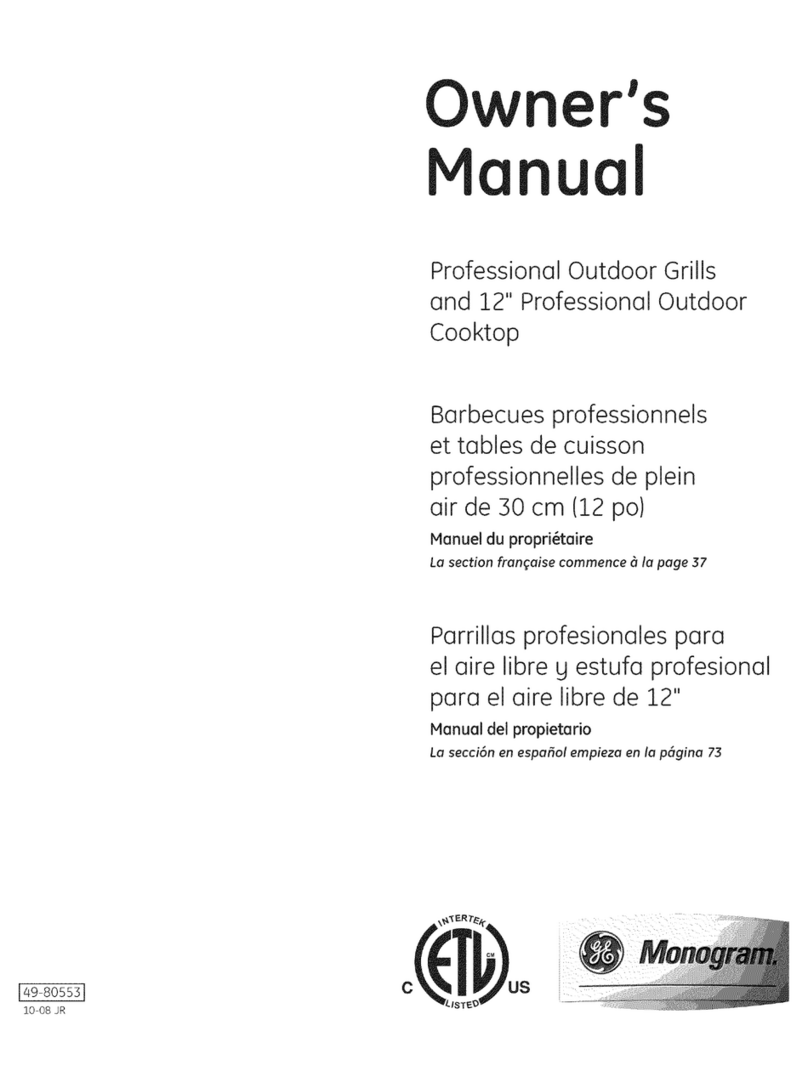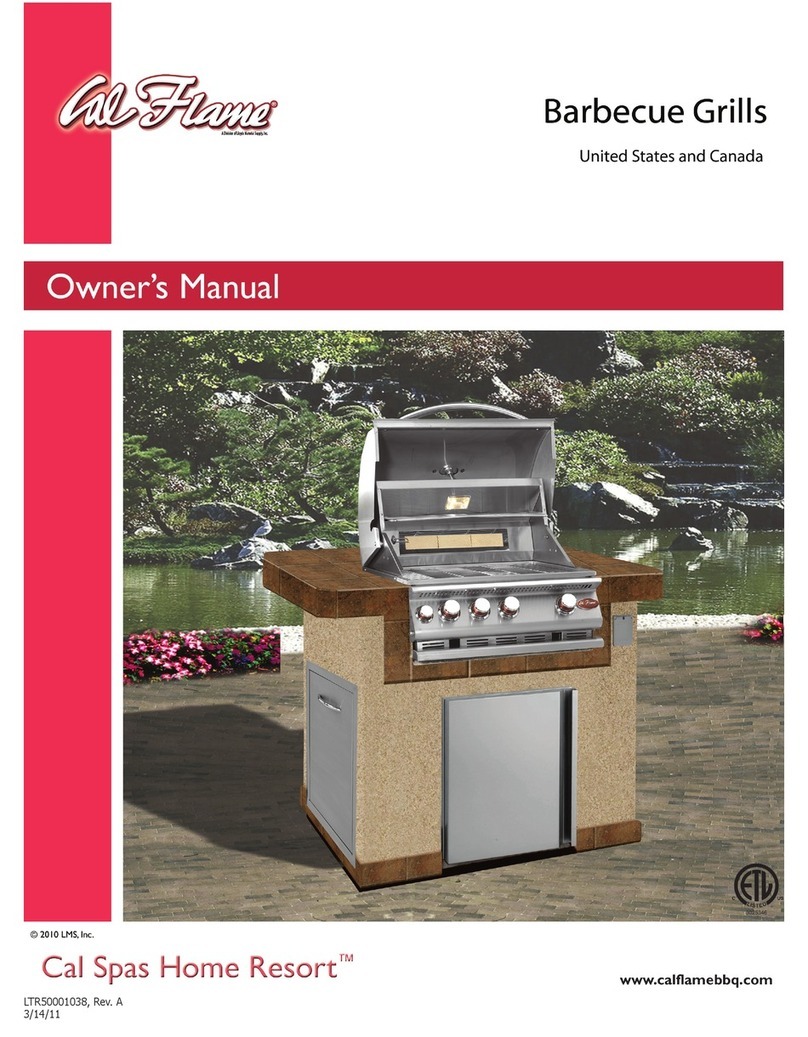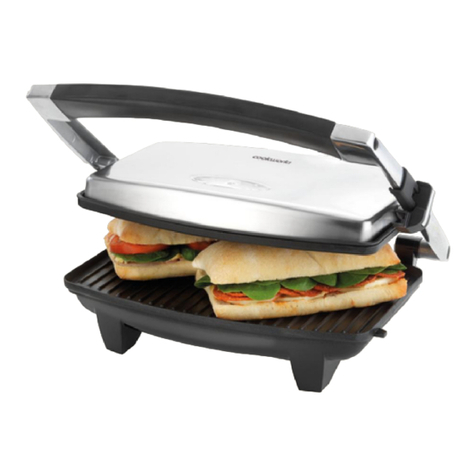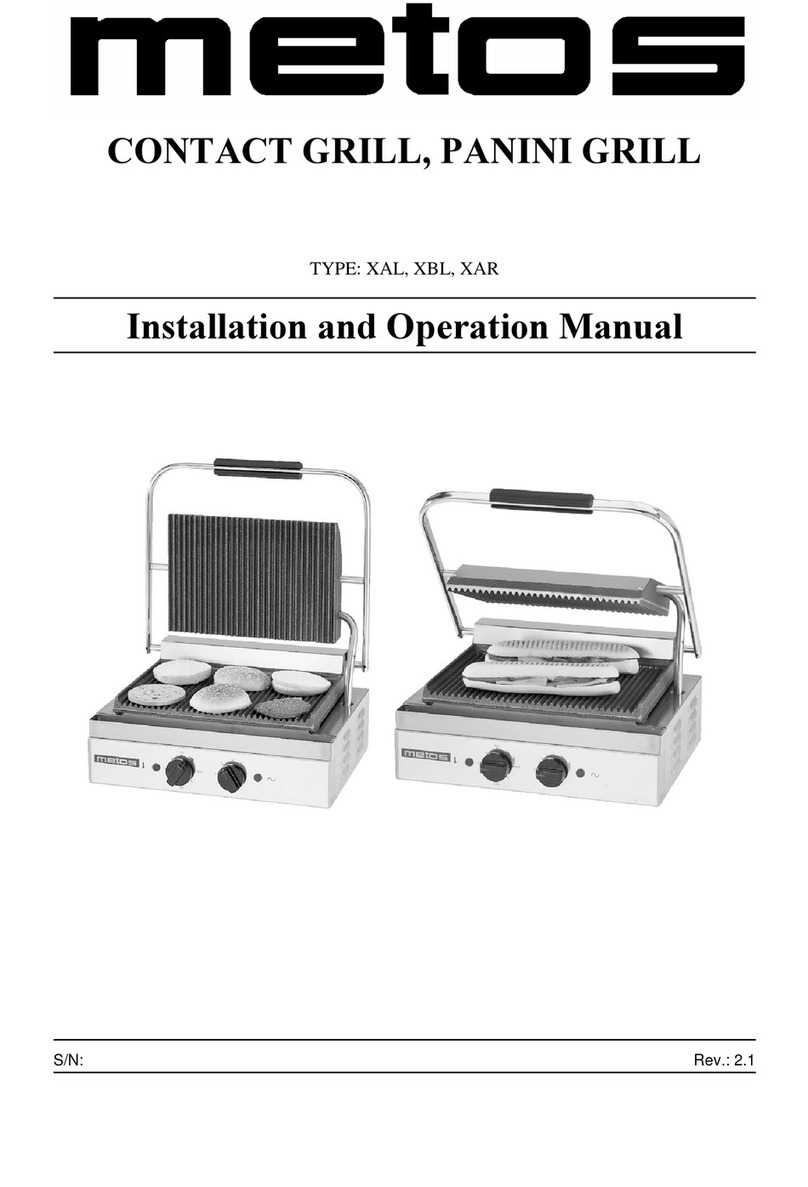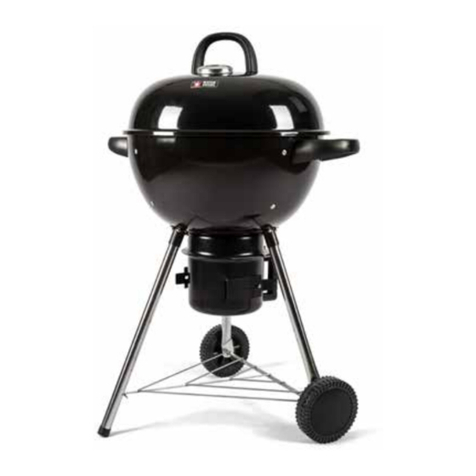10
The length of the hose hall should not exceed 1.5m.
FIXING THE REGULATOR TO THE GAS BOTTLE
Confirm all barbecue control knobs are in the off position. Connect the regulator to the gas bottle according to your
regulator and bottle dealer’s instructions.
Leak testing (to be performed in a well-ventilated area).
Confirm all barbecue control knobs are in the off position.
Open the gas control valve on the bottle or regulator.
Check for leaks by brushing a solution of 1/2 water and 1/2 soap over all gas system joints, including all valve
connections, hose connections and regulator connections.
NEVER USEAN OPEN FLAME to test for leaks at anytime.
If bubbles form over any of the joints, there is a leak. Turn off the gas supply and retighten all joints.
Repeat test. If bubbles form again, do not use the barbecue. Please contact your local dealer for assistance. Leak test
annually, and whenever the gas bottle is removed or replaced.
OPERATION
Warnings
Before proceeding, make certain that you understand the IMPORTANT INFORMATION section of this manual.
Full coverage of plates on the cooking area will cause excessive build-up of heat and damage the barbecue.
Preparation before cooking
●To prevent foods from sticking to the cooking grill, please use a long handled brush to apply a light coat of cooking or
vegetable oil before each barbecuing session. (Note: when cooking for first time, paint colours may change slightly as a
result. This is normal and should be expected.)
●please put some water in the tray of oil。
Lighting the barbecue
IGNITION: Battery operated multi shot ignition unit (1pc AA Battery)
1. Open the barbecue hood.
2. Ensure all knobs are in the “OFF”position. Open the gas control valve on the gas bottle or regulator.
3. Open the gas control valve at the cylinder.
4.From “OFF”position, push down the front left control knob and keep pressing whilst turning anti-clockwise to the
“HIGH”position and pressing the ignition button (a clicking sound is heard), this will light the left hand burner.
5. If burner fails to light, turn to “OFF”position and wait five minutes. Then begin again step 4.
If the burner still fails to light after several attempts, try the manual ignition procedure below.
6. When the left hand burner is lit any of the remaining burners can be lit by repeating operation 4 and 5.
7. After use, turn all control knobs to the “OFF”position and turn off the gas control valve at the cylinder.
8. After ignition, the burner should be burned at the “HIGH”position for 3-5 minutes in order to preheat the barbecue.
This process should be done before every cooking session.
The hood should be open during preheating.
CONVENTIONAL IGNITION:
1. Open the gas control valve at the cylinder.
2. Insert lit match through the match lighting hole on the left side of the barbecue body and place near the left burner.
3. Push and turn the control knob anti-clockwise to the “HIGH”position.
